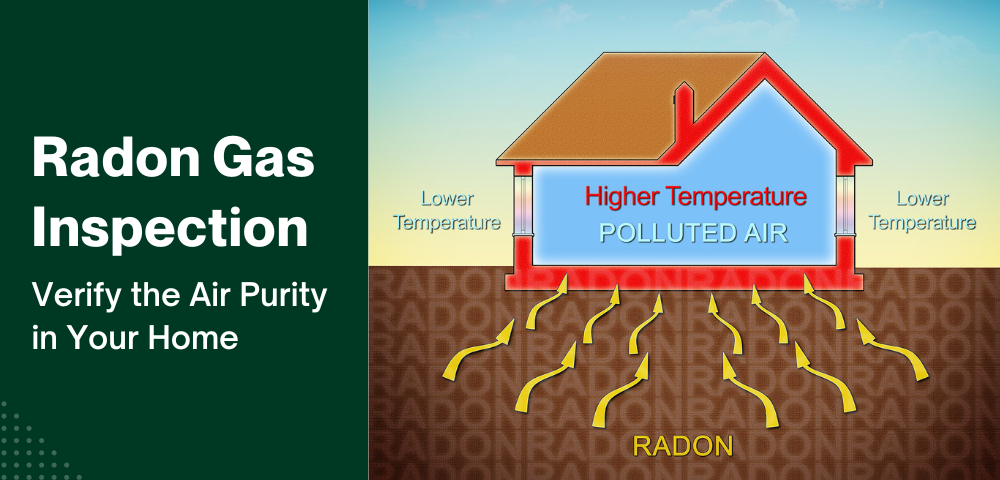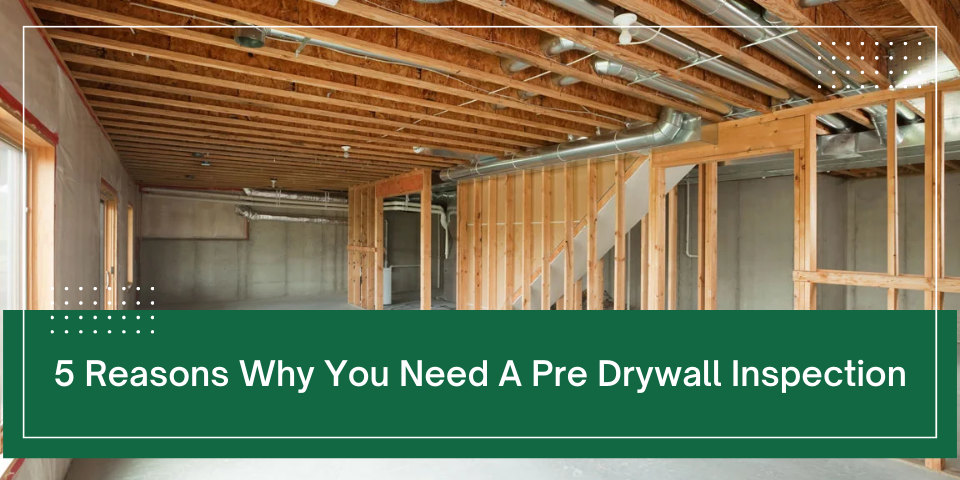Radon Gas Inspection – Verify the Air Purity in Your Home

What is a Home Maintenance Inspection, and Do You Need One?
March 15, 2023
What is Lawn Sprinkler System Inspection and What are the Benefits?
April 28, 2023Your home is meant to be a sanctuary where you can escape from the chaos of the outside world. It's a place where you should feel safe, secure, and comfortable. One aspect of maintaining a healthy and comfortable home environment is ensuring the air you breathe is clean and free of harmful pollutants. Of the number of pollutants that could potentially invade your living space, radon gas is one of the most dangerous and yet, often overlooked. In this blog, we'll discuss why indoor air quality matters, ho cw to test your indoor air quality for radon, and provide practical tips to improve your indoor air quality and keep your home safe.
Why Indoor Air Quality Matters
Indoor air quality (IAQ) plays a crucial role in maintaining the overall health and well-being of the occupants. Poor IAQ can lead to various health issues such as allergies, asthma, and other respiratory illnesses. In the case of radon gas, prolonged exposure can even increase the risk of developing lung cancer. Radon is an odorless, tasteless, and colorless gas that can seep into your home from the soil and rock beneath it. As the second leading cause of lung cancer after smoking, radon gas is a serious concern for homeowners and renters alike.
How to Test Your Indoor Air Quality for Radon
A radon gas inspection radon is the only way to determine whether you and your family are at risk. There are two main types of radon testing: short-term and long-term tests. Short-term tests last between 2 to 7 days, while long-term tests can last up to a year. Long-term tests are more accurate as they account for fluctuations in radon levels over time.
Short-Term Testing:
The fastest method to assess your home's air safety in relation to radon gas is through a 48-hour short-term test. With this quick test, you can obtain answers about your home's radon levels in just two days. ClearVue employs an advanced electronic continuous monitor to accurately detect radon levels during this brief testing period.
Long-Term Testing:
After completing a short-term test and confirming that radon levels in your home fall within safe parameters, you may opt for a long-term test. This extended testing process, which lasts for over 90 days, provides a comprehensive understanding of your home's average radon levels throughout the year. Long-term testing also helps identify any seasonal fluctuations in radon levels, ensuring you stay well-informed about your home's air safety.
How to Improve Your Indoor Air Quality
If your radon test results indicate high levels, there are several ways to improve your indoor air quality and reduce radon levels:
- Increase ventilation: Opening windows and doors to increase the airflow in your home can help dilute radon levels. However, this method is only a temporary solution and may not be suitable during extreme weather conditions.
- Seal cracks and openings: Identify and seal any cracks or openings in your home's foundation, walls, and floors. This helps prevent radon gas from entering your living space.
- Install a radon mitigation system: A radon mitigation system, such as a soil depressurization system, can effectively reduce radon levels in your home. This system works by creating a vacuum beneath your home's foundation to draw out radon gas before it enters your living space. A certified radon mitigation professional should install the system to ensure its effectiveness and compliance with local building codes.
- Perform regular maintenance: Keep your radon mitigation system in optimal working condition by scheduling regular maintenance and inspections with a qualified professional.
- Test your home's air quality periodically: Even after installing a radon mitigation system, it's essential to test your home's air quality every couple of years to ensure radon levels remain low.
Better Indoor Air Quality Made Simple
In addition to addressing radon gas, you can take other simple steps to improve your overall indoor air quality:
- Keep your home clean: Regular cleaning can help reduce dust, pet dander, and other allergens in your home. Vacuum frequently, especially if you have carpets, and use a vacuum cleaner with a HEPA filter to trap small particles.
- Maintain proper humidity levels: High humidity can encourage the growth of mold and mildew, which can negatively impact your indoor air quality. Aim to keep the humidity levels in your home between 30% and 50%. Use a dehumidifier or air conditioner to control moisture levels, and fix any leaks or water damage promptly.
- Use air purifiers: Air purifiers with HEPA filters can help remove allergens and other pollutants from your indoor air. Place air purifiers in rooms where you spend the most time, such as bedrooms and living areas.
- Choose low-VOC products: Volatile organic compounds (VOCs) are chemicals found in many household products, including paints, cleaning supplies, and building materials. These chemicals can cause eye, nose, and throat irritation, headaches, and even more severe health problems. Opt for low-VOC or VOC-free products whenever possible to minimize your exposure.
- Avoid smoking indoors: Secondhand smoke is a significant source of indoor air pollution and can increase the risk of respiratory illnesses and lung cancer. Make your home a smoke-free zone to protect your family and improve your indoor air quality.
- Ventilate your home: Proper ventilation can help remove indoor air pollutants and bring in fresh outdoor air. Install exhaust fans in bathrooms and kitchens to vent moisture and cooking fumes outside. Use an energy-efficient heat recovery ventilator (HRV) or energy recovery ventilator (ERV) to provide fresh air while minimizing energy loss.
- Bring nature indoors: Certain indoor plants can help improve air quality by removing pollutants like formaldehyde, benzene, and trichloroethylene. Some air-purifying plants include spider plants, snake plants, and Boston ferns. Just be sure to research the plants you choose, as some can be toxic to pets.
Conclusion
Ensuring your home has clean and healthy air is vital for the well-being of you and your family. Radon gas, a common yet dangerous pollutant, can pose significant health risks if not addressed. By testing your home for radon and taking necessary steps to reduce its levels, you can create a safer living environment. In addition, implementing the tips mentioned above can further improve your indoor air quality and help you maintain a healthy, comfortable home.
In addition to radon testing, ClearVUE offers annual home inspections by inspectors equipped with the unmatched experience and training necessary to help home buyers make well-informed decisions with precise and professional inspection services. Our main goal will always be to clearly convey the overall condition and integrity of the home and deliver the results honestly and without distraction.




